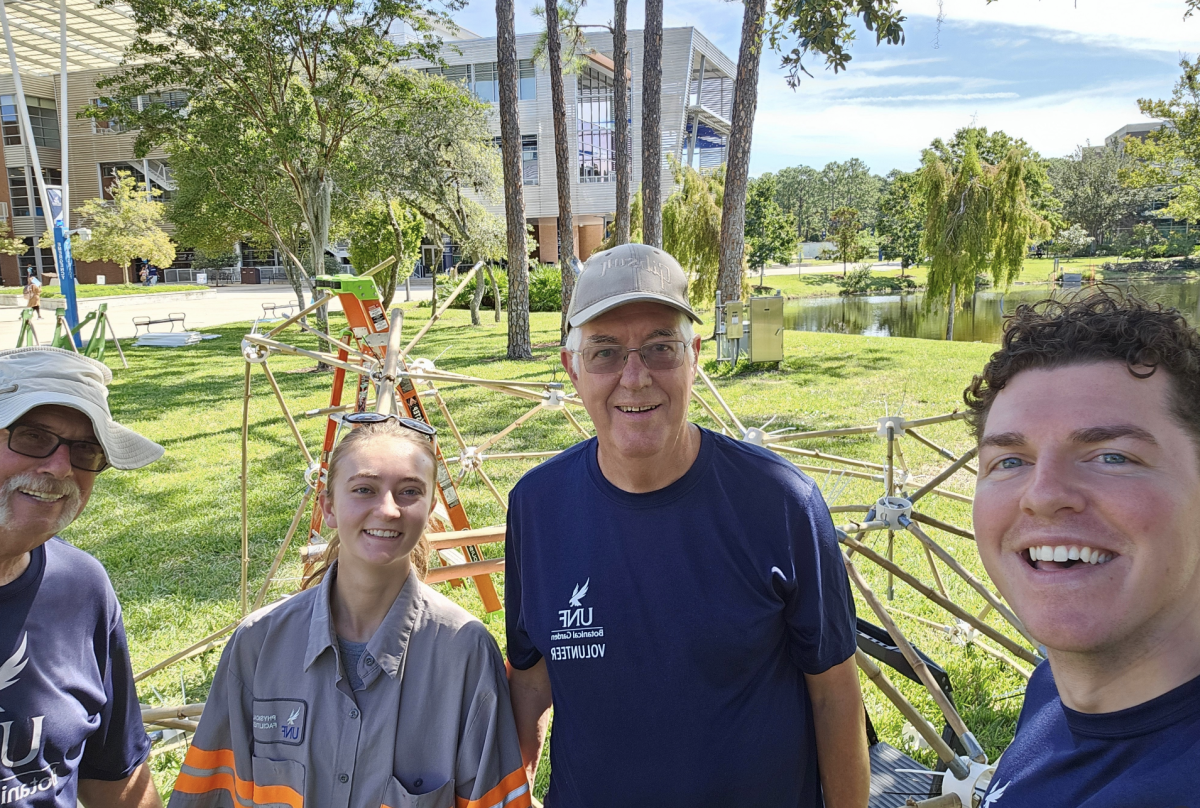In a cold and unassuming research lab in the University of North Florida biology building swim thousands of tardigrades, a little-known animal with an extraordinary ability. These microscopic creatures are being studied under the loving care of Dr. Frank Smith, an assistant professor in the UNF biology department, and his student research assistants. Now, because of the COVID-19 pandemic, the little creatures are getting the care they need from Smith and his research team’s homes.
Tardigrades are microscopic animals that can survive environmental extremes. Tardigrades are found almost everywhere on earth, from deep sea thermal vents to the top of Mount Everest. They have even been known to survive in space. These survival skills are due to a state called cryptobiosis, induced by dehydration. During cryptobiosis, tardigrades are able to cease their metabolic processes, according to www.americanscientist.org.
Tardigrades are sometimes referred to as water bears or moss piglets because of their resemblance to the other animals. Their chubby, eight-legged bodies are precisely what Smith is studying. “Animal body plans are very ancient characteristics that we use to identify different lineages of animals,” Smith said.
Smith’s interest in tardigrades stems from the link between the body plans of tardigrades and arthropods, such as insects and crustaceans. The similarities allow Smith to use tardigrades to test hypotheses about arthropod evolution. This has broader implications about the evolutionary relationship between all animals.
The technique used by Smith, in which he can identify the active genes in a tardigrade embryo, is difficult, due to the small size of the embryos. Smith says he’s the only person in the world to use this technique. While this is beneficial to him in that he has less competition, Smith also wishes more people could use it. “It’d be really nice if the system would take off and lots of different people would be studying it because we’d learn a lot about tardigrades. I think we’re still a few years away from that happening.”
A tardigrade poster taped to the door of the research lab, hand-drawn by one of the research assistants, is just a hint at the enthusiasm these students have for tardigrades. Marine biology student Raul Chavarria, once called the “tardigrade prince” due to his frequent educational tardigrade posts on his Instagram account, was approached by Smith to work on this research.
Currently, Chavarria is scouring the UNF campus for a new species of tardigrade. He hopes to be able to name a new discovery after the university. This research was funded by a grant Smith received from UNF.
Chavarria believes that everyone should know about tardigrades because everyone comes in contact with tardigrades every day. “You’ll probably touch a tree,” he said. “You’re probably hanging out with tardigrades at that point.”
Interdisciplinary studies major Mandy Cumming joined the research project on a whim and had no idea if she would enjoy it. Now she is confident she wants to research to be a part of her future. Cumming is working on publishing a manuscript with Smith on the appendages of the specific species of tardigrade they cultivate in the lab.
Although Chavarria and Cumming are now dedicated to the research, when they started at UNF they were unaware that this was something they could pursue as a student. They believe there is an unawareness among students about the research happening at the college. Both are first generation students, which they say is a factor in them not knowing about research opportunities.
“There’s a lot that first generation students don’t know about academia going into it,” Cumming said. “There’s an assumption that most students know what’s out there because their parents went through it.”
Cumming says that faculty that support and talk to students is helpful for finding these opportunities.
It is clear that both students have developed a strong appreciation for research. “It’s for people who are curious about the universe,” Cumming said. For Chavarria, finding tardigrades all around him helps him appreciate the small details of life.
__
For more information or news tips, or if you see an error in this story or have any compliments or concerns, contact editor@unfspinnaker.com
















Mike Shaw | Apr 25, 2020 at 8:43 am
Thanks for a nice article on tardigrades, Emily!
More information about tardigrades on my site tardigrade.us
Mike Shaw
The Space Bear Hunter
(the person who popularized the tardigrade in my video)